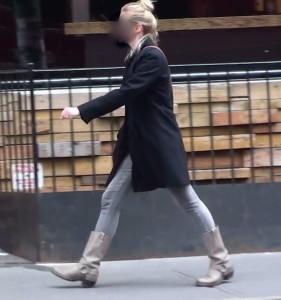 If we want to learn to walk correctly we need to reassess what our image of walking is. One of the key questions I ask all of my walking clients is, “If you want to go faster, do you think you want to take long strides or short strides?” Invariably the answer is long strides and I get to make my incorrect answer sound that I can’t figure out how to spell.
If we want to learn to walk correctly we need to reassess what our image of walking is. One of the key questions I ask all of my walking clients is, “If you want to go faster, do you think you want to take long strides or short strides?” Invariably the answer is long strides and I get to make my incorrect answer sound that I can’t figure out how to spell.
Many of the correct cues for walking are counter intuitive. If we want to move faster we need to take more steps rather than longer strides. It makes sense to think otherwise (in a counter intuitive way) but a quick check of what actually happens when we increase our stride length should show that long strides are not helpful.
Hyperextension of a joint is when any given joint is pushed beyond its normal range of motion. While hyperextension of the joints isn’t available to everyone, many people habitually hyperextend their knees when standing and walking. When we learn to walk as children, no one really tells us how, and for the first year or two of walking, almost everyone does it perfectly. If you ever watch children at a playground they lean slightly forward before beginning to walk and then get motoring. If you walk that way, essentially falling forward through space, there is no ability to hyperextend.
A short stride guarantees that you will not hyperextend your knees while a stride that is too long does the opposite. If you take a stride that is too long you will have to push the calf backwards to move forwards. Walking is all about moving forward and long strides essentially force us to move backwards first in order to move forward. Try it for yourself and see.
***
